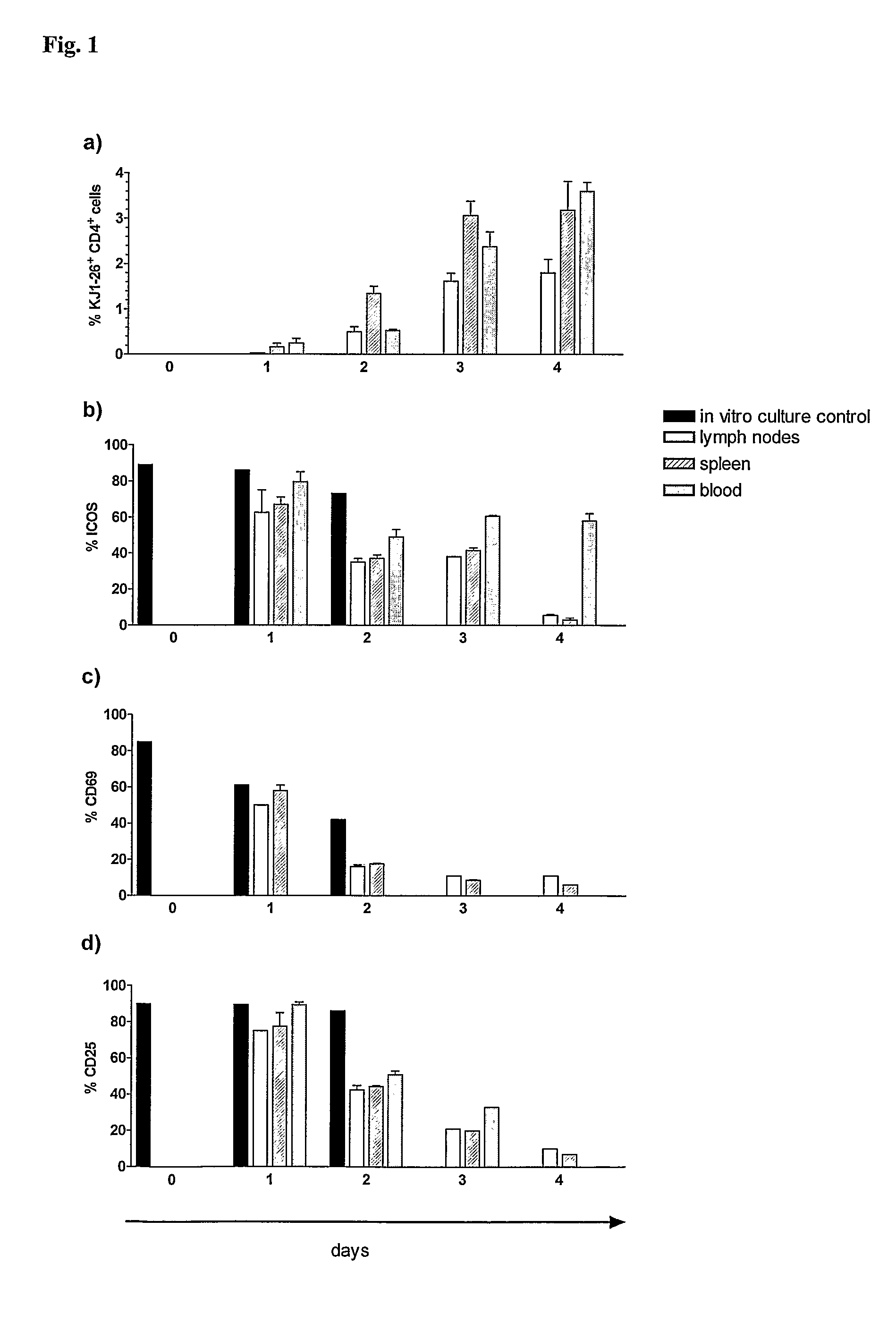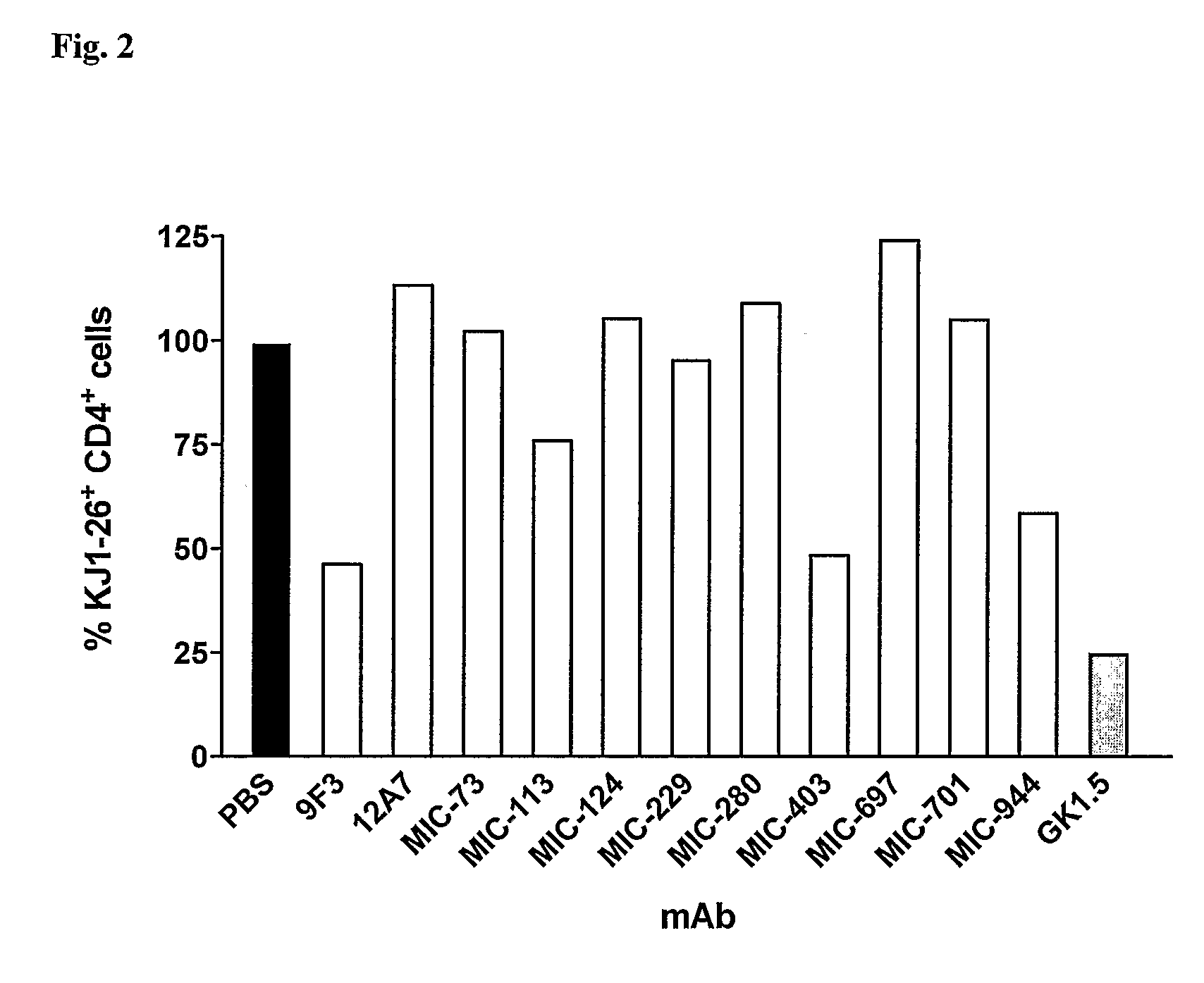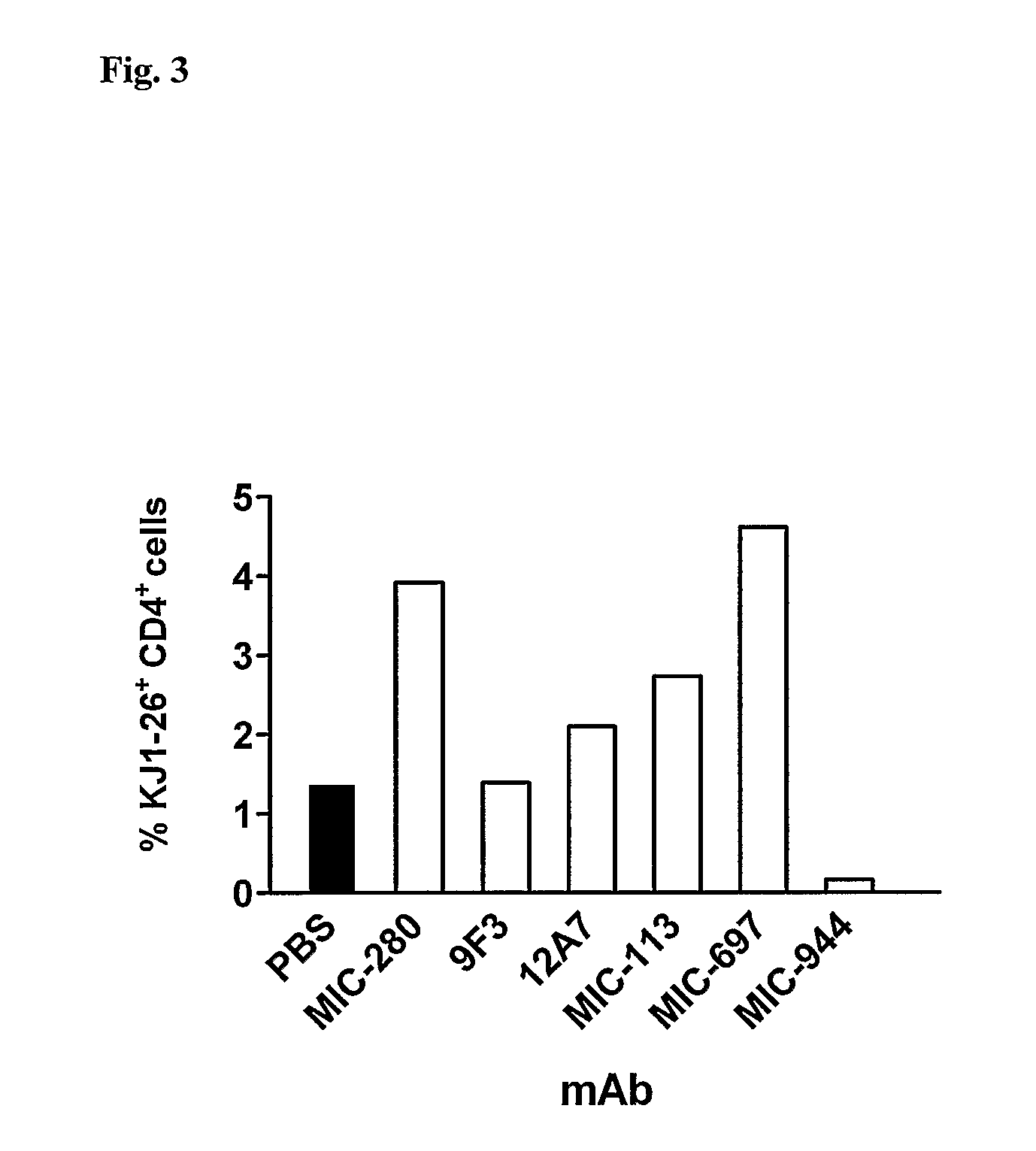Antibodies for depletion of ICOS-positive cells in vivo
a technology of icos-positive cells and antibodies, applied in the field of binding agents, can solve the problems of not providing any information whether icos-expressing t cells can at all be depleted in vivo, potentially severe disease-aggravating effects, and no data available whether t cells can be depleted
- Summary
- Abstract
- Description
- Claims
- Application Information
AI Technical Summary
Benefits of technology
Problems solved by technology
Method used
Image
Examples
example 1
Generation of mAb Against Murine ICOS
[0109]LEWIS rat were immunized with soluble chimeric murine ICOS-rabbit-Ig fusion protein as described (Mages H W et al., Eur. J. Immunol. 2000, 30:1040-1047), the spleen cells fused with myeloma P3X63Ag8.653 (American Type Culture Collection) by standard techniques and the resulting hybridomas were screened by flow cytometry using L-cells transfected with murine ICOS (Mages H W et al., Eur. J. Immunol. 2000, 30:1040-1047). Using this approach 12 different mAb directed against murine ICOS were obtained.
example 2
Establishment of an In Vivo Model for Testing of ICOS-Specific mAb for Depletion Capacity
[0110]Spleen cells from DO11.10 mice, which contain T cells with a transgenic receptor specific for ovalbumine (OVA) were stimulated with OVA323-339 peptide for 3 days in vitro. At the end of this culture 90% of the transgenic T cells expressed ICOS. The transgenic T cells were then transferred by the i.v. route into syngeneic BALB / c mice (10×106 T cells / mouse). On days 1, 2, 3, and 4 after transfer the transgenic T cells (which can be traced using mAb KJ1-26 directed to the transgenic T cell receptor) were analyzed in the lymph nodes (LN), spleen and blood for the expression of the activation surface molecules ICOS, CD69 and CD25. The experiment demonstrated that the activated, ICOS-positive T cells continue to expand in vivo and represent up to 4% of all lymphocytes in the examined compartments on day 4 (FIG. 1a). The experiment also showed that the transferred transgenic T cells continue to e...
example 3
Testing of mAb Directed to Murine ICOS for Depletion In Vivo after Adoptive Transfer of Transgenic ICOS-Positive OVA-Specific T Cells without Local Application of OVA
[0111]The basic setup of the experiment was as described in Example 2. After 2 days of in vitro culture with OVA peptide, 5×106 DO11.100VA-TCR transgenic KJ1.26+ T cells (50% of them ICOS-positive) were transferred i.v. into BALB / c mice. Various ICOS-specific mAb were administered i.p. at a dose of 500 μg in 300 μl PBS immediately after transfer. The negative control was treatment with PBS, treatment with mAb GK1.5 (an anti-CD4 mAb with known depletion capability) served as a positive control. On day 6 the peripheral LN were removed and analyzed for the percentage of transgenic KJ1.26+ T cells by flow cytometry (sham-treatment with PBS=100%). This experiment determined that in the absence of OVA (the antigen recognized by the transgenic T cells) some mAb (MIC-944, 9F3 and MIC-403) effectively depleted ICOS-positive T ce...
PUM
| Property | Measurement | Unit |
|---|---|---|
| molecular weight | aaaaa | aaaaa |
| molecular weight | aaaaa | aaaaa |
| surface density | aaaaa | aaaaa |
Abstract
Description
Claims
Application Information
 Login to View More
Login to View More - R&D
- Intellectual Property
- Life Sciences
- Materials
- Tech Scout
- Unparalleled Data Quality
- Higher Quality Content
- 60% Fewer Hallucinations
Browse by: Latest US Patents, China's latest patents, Technical Efficacy Thesaurus, Application Domain, Technology Topic, Popular Technical Reports.
© 2025 PatSnap. All rights reserved.Legal|Privacy policy|Modern Slavery Act Transparency Statement|Sitemap|About US| Contact US: help@patsnap.com



